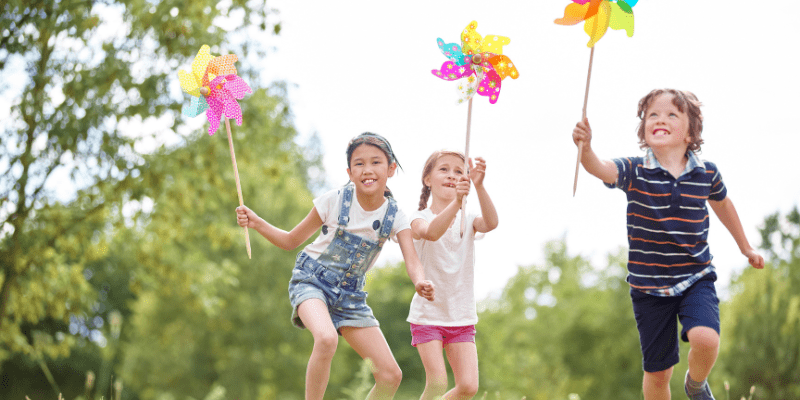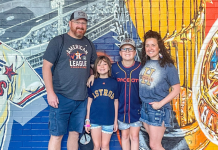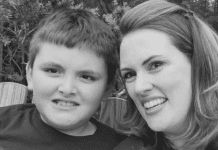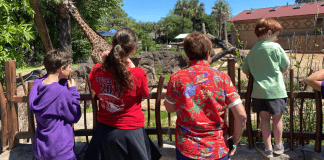Working in child welfare for over ten years, and being a therapist that works with kids, the topic of child abuse is one I am more than familiar with. We learned about it in school. I did an internship at a child advocacy center that works with kids who were victims of abuse, and I spent the better part of my career so far working with kids from foster care, most of whom have experienced some type of child abuse or neglect.
 As a parent, the reality of child abuse is something I would rather not think about. It’s horrifying to contemplate that happening to any child, much less my own. But, just like school shootings, racism, and the patriarchy, I see it as a reality that I live in as a parent, and something I unfortunately have to prepare my children for. Here are the stats we are up against that is a good reminder when we just want to live in the sweet state of denial.
As a parent, the reality of child abuse is something I would rather not think about. It’s horrifying to contemplate that happening to any child, much less my own. But, just like school shootings, racism, and the patriarchy, I see it as a reality that I live in as a parent, and something I unfortunately have to prepare my children for. Here are the stats we are up against that is a good reminder when we just want to live in the sweet state of denial.
- In Texas, more than 2 children die from child abuse or neglect on average every week, 182 children are confirmed victims daily, and more than 7 children are maltreated every hour.
- Adult retrospective studies show that 1 in 4 women and 1 in 6 men were sexually abused before the age of 18 in the state of Texas.
- 85% of all kids that are victims of child abuse are under the age of 5 years old.
And it doesn’t get much better for just Houston…
- Houston is the largest hub for human sex trafficking in the nation, and the I-10 corridor between El Paso and Houston has been identified as the main human trafficking route in the United States.
- Most of those victims entered into sex trafficking between the ages of 12 – 14 years old.
Deep breath y’all. While this is a horrifying reality we have to live with, there are ways that you can prevent or minimize the risk for your child, and the children in your community.
Call a Penis a Penis
Never ever ever will I forget a story told in one of my early abuse prevention training sessions. A little girl was being abused by a family member; however the word that she had been taught for her vulva was “cookie”. She told so many people that this person had touched her “cookie”, and was dismissed each time, because people assumed she was talking about an actual cookie. Eventually they realized what was occurring, but my goodness, how much did this child have to endure before someone stepped in because of something so seemingly insignificant?
Teach your children the names for their body parts. All of them. Elbow, knee, penis, scrotum, vulva, vagina, shoulder, toes. And while you are at it, talk about which parts are private, and who can touch them, and what to do if someone touches them anywhere they don’t want without permission.
Teach your Child about Sex and Body Boundaries
This has been a big one for me as a parent. I grew up in a household that didn’t talk about sex, and it is still uncomfortable for me. But I want my children to have comfort around those topics, and that means starting early. How does this help prevent abuse? Well, my six year old knows sex is something that happens between grown ups, not kids, so if another child tries to do something sexual, or an adult suggests something, my kid knows that is out of the ordinary.
Other ways to teach about consent and body boundaries are redirecting in play instances where one child says “stop”, modeling stopping if you are tickling or roughhousing, or practicing your child using their voice to tell when they are uncomfortable. For preschool and school aged kids, I love the We Say What’s OK Series as a jumping off point for discussions.
Talk about “safe and not safe”, rather than “good or bad”
Some of us may have been taught the good touch/bad touch concept in terms of abuse. When I work with families, especially those whose kids have experienced trauma or abuse, we switch that vocab to safe and not safe. Why? Because if a child has experienced some sort of abuse or trauma, their sensitivity to shame is through the roof. If we name something as “bad touch” and it happens to our child, they may go down a shame spiral of thinking they are bad, something bad happened, etc. Reframing to safe and not safe helps decrease this shame significantly. You can also normalize this in the other boundaries you set for your kids. This is safe to climb. This person is safe to spend the night with. That show isn’t safe for you to watch. And then explain why.
Do Your Homework
If your child is going to be at someone’s house without you, ask who will be there and what the privacy rules are. If you are finding a new daycare or extracurricular program, ask what safety regulations they have in place and what training they give their adults. Check out the Texas Sex Offender Registry map to see where people with criminal history related to child abuse may be in your neighborhood.
Don’t Forget Online Safety
We don’t think about this all the time, but every single photo of your child on the internet becomes public once it is out there. And there are people with serious issues who can turn a cute shot of your eight year old at the pool or a funny video of your four year old dancing in their underwear into something sexual, and then share it. It’s depraved, absolutely, but it’s the reality of the internet, so maybe think about what is out there when it comes to content your kids are in.
Then there’s the risks our kids encounter when they go online. Even little ones can see something terrible snuck into YouTube Kids, and the average age of a child seeing pornography for the first time is 11 years old. Have internet safety measures and blocks in place, yes, but also treat the internet like you do the real world. Talk about what is safe and not safe, enforce limits, check out where your kids are spending their time, and guide them on what to do if they encounter pornography or other content that is scary or uncomfortable. As kids get older, this transitions into the risks of posting photos that could be sexual, and who has access to them, as well as how to block or get out of icky or uncomfortable situations with strangers online.
If You See Something, Say Something
Did you know that Texas is a mandated reporter state? Section 261.101 of the Texas Family Code mandates that anyone who suspects child abuse or neglect must report it immediately. This does not just apply to child care workers, therapists, and healthcare professionals. It is everyone. If you suspect that a child may be experiencing abuse or neglect, you can visit https://www.dfps.texas.gov/contact_us/report_abuse.asp to make a report online, or call the 24 hour hotline. Reporters are kept anonymous.
Support Organizations That Help Victims of Child Abuse
Teach your kids about how to help others in their community, or just donate to provide support. Visit https://cactx.org/ to find a child advocacy center near you, and learn more about how to support abuse victims and prevent child abuse.















